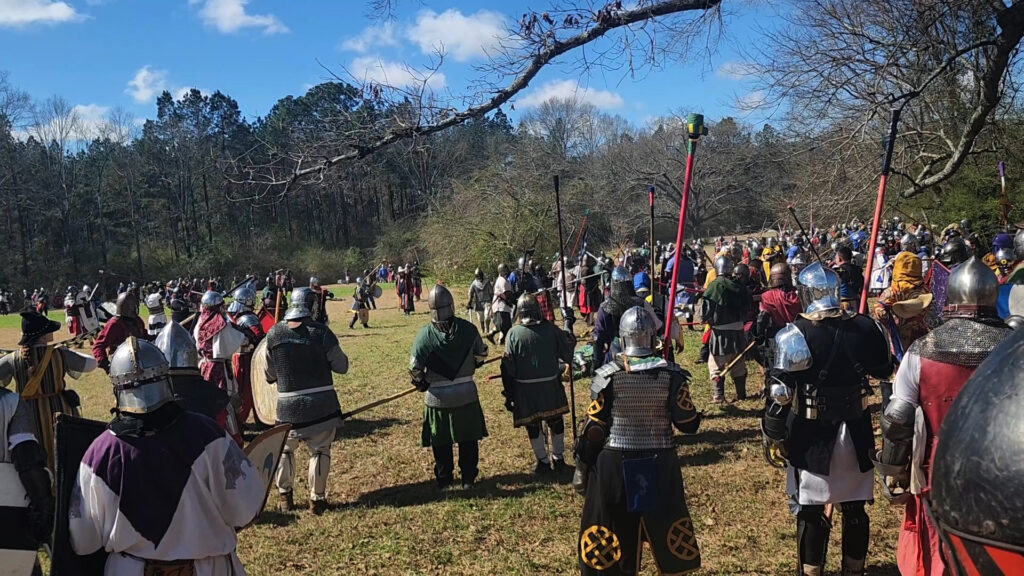Combat
Heavy armor, rapier, rattan, battles, tournaments, and more.

Heavy Armored Combat
Armored combat in the SCA resembles medieval foot tournaments. Combatants can face each other in single combat or as small groups in tournaments. They can also take part in large melee battles that may have dozens of combatants on each side. Larger events may include larger than average battles, with several hundred fighters fielded by a combination of various groups.
Since we prefer that no one gets hurt, SCA combatants wear real armor and use rattan swords. Rattan, which looks like bamboo but has a solid core, is springy enough to absorb some of the force of the blow without snapping, and light enough to approximate the weight of a steel sword. Swords are constructed by wrapping a yard-long piece of rattan in duct tape and attaching a hilt. Building armor is much more complex – a complete suit has many parts, which can be made from hammered steel, rivets, leather, even rigid plastic (if well-disguised). Some pieces of armor can take many, many hours to construct.
Novice fighters are trained by the more experienced fighters. They are taught how to use their weapons, how to defend themselves, and how to judge blows received in combat. Every fighter on the field is on his/her honor to accept a blow sufficient to “wound” or “kill”. At the end of training, if the marshals (our safety officers) decide that the fighter is safe (unlikely to hurt themselves or an opponent), then the fighter is considered authorized to fight. The process of becoming authorized can take from a few weeks to several months.
Rapier Combat
Another type of SCA combat is fencing, also known as rapier combat. Participants use metal blades and for protection, they wear regulation fencing masks, padded torso protection, and shirts and pants made from heavy fabric to protect their limbs. Unlike modern fencing, SCA fencing is done “in-the-round”, and combatants can fight in close with their opponents. Blows are acknowledged by the recipient (as in armored combat), not by a set of judges. Fencers can face each other one-on-one in tournaments, or in large melee battles with dozens or even hundreds on a side.
SCA fencing has its own set of marshals who supervise the authorization process. New fencers must demonstrate their knowledge of the rules and ability to participate safely before they can compete in tournaments.
